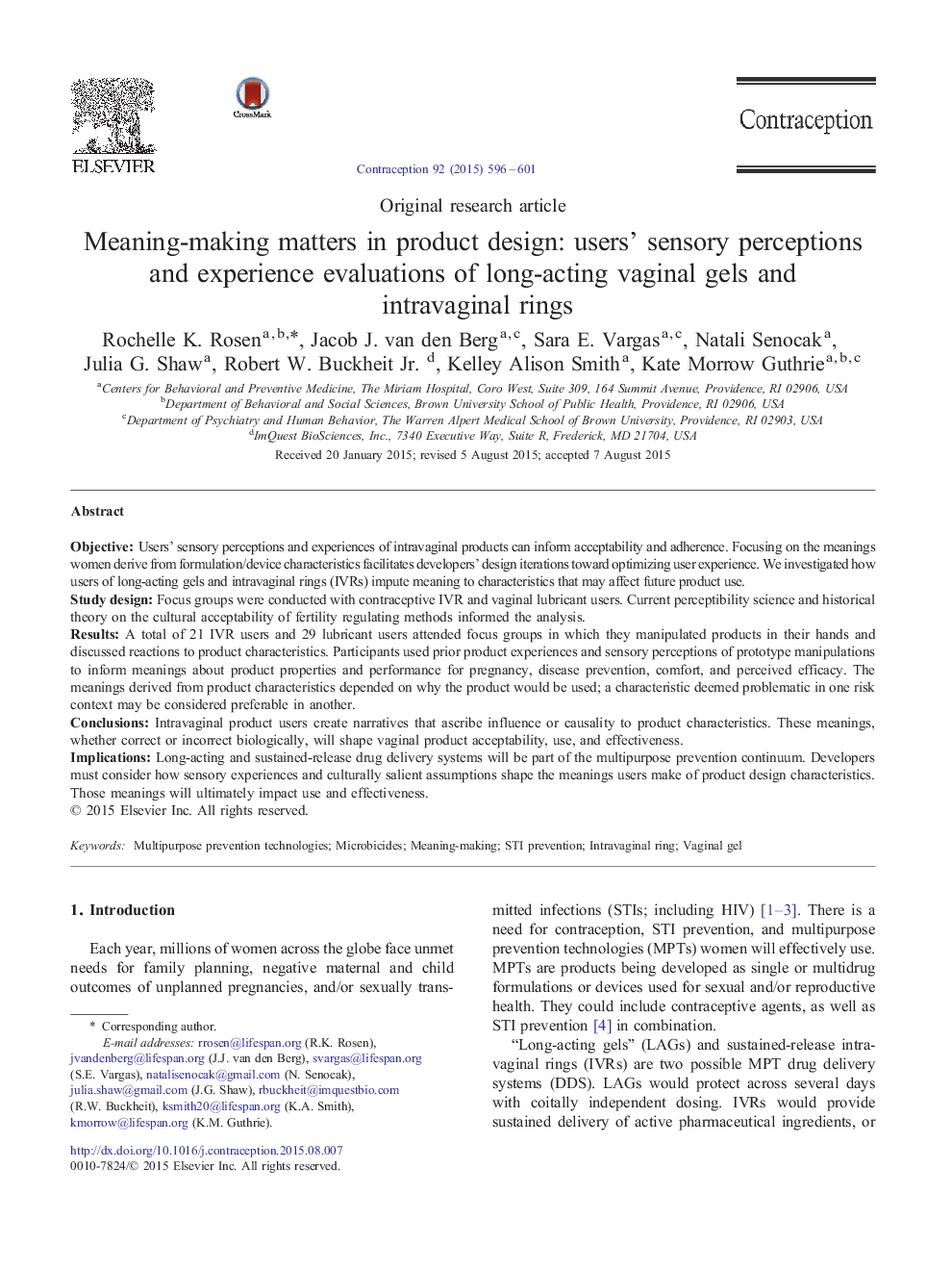| Article ID | Journal | Published Year | Pages | File Type |
|---|---|---|---|---|
| 6171183 | Contraception | 2015 | 6 Pages |
ObjectiveUsers' sensory perceptions and experiences of intravaginal products can inform acceptability and adherence. Focusing on the meanings women derive from formulation/device characteristics facilitates developers' design iterations toward optimizing user experience. We investigated how users of long-acting gels and intravaginal rings (IVRs) impute meaning to characteristics that may affect future product use.Study designFocus groups were conducted with contraceptive IVR and vaginal lubricant users. Current perceptibility science and historical theory on the cultural acceptability of fertility regulating methods informed the analysis.ResultsA total of 21 IVR users and 29 lubricant users attended focus groups in which they manipulated products in their hands and discussed reactions to product characteristics. Participants used prior product experiences and sensory perceptions of prototype manipulations to inform meanings about product properties and performance for pregnancy, disease prevention, comfort, and perceived efficacy. The meanings derived from product characteristics depended on why the product would be used; a characteristic deemed problematic in one risk context may be considered preferable in another.ConclusionsIntravaginal product users create narratives that ascribe influence or causality to product characteristics. These meanings, whether correct or incorrect biologically, will shape vaginal product acceptability, use, and effectiveness.ImplicationsLong-acting and sustained-release drug delivery systems will be part of the multipurpose prevention continuum. Developers must consider how sensory experiences and culturally salient assumptions shape the meanings users make of product design characteristics. Those meanings will ultimately impact use and effectiveness.
